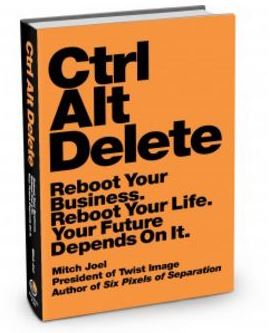

Mitch Joel knows that brands– from small to large; B2B or B2C– that are trying to navigate the ever-shifting landscape of digital marketing feel like they’re in hell.
But from where he’s sitting– they’re just in purgatory. That is to say, they see the value and importance of things like mobile, social and artificial intelligence– but doing little about it.
So what do companies need to do to get out of purgatory?
“Everything,” Joel says.
He offered the example of picking up your phone to search for a store’s hours.
“You can swipe right or left to find someone to have sex with in minutes, but you spend five minutes trying to find when a store opens.”
Too often, customers have to do things like spending extra time navigating a website that hasn’t been optimized for their smartphone because the brand is still stuck in purgatory– partially aware of digital transformation, but not acting on it. Thinking they’re focused on automation and personalization, without truly deploying automation and personalization.
A Rock Star of Marketing
Joel is president of digital agency Mirum and the author of two books on digital transformation– Six Pixels of Separation: Everyone is Connected. Connect Your Business to Everyone and Ctrl Alt Delete: Reboot Your Business. Reboot Your Life. Your Future Depends on It.
Dubbed “The Rock Star of Digital Marketing” by Marketing magazine, Joel has made it his business to know what lies ahead in the world of digital. He’s frequently called upon by brands including Google, Walmart, Starbucks, Proctor & Gamble and Twitter to share his insight on the always-evolving world of marketing.
It’s not that Joel doesn’t understand the frustration marketers feel as they try to embrace digital change.
There’s not only the need to shift or even overhaul the technology infrastructure, but also the people using this new technology all have to adjust to a learning curve. The core competencies of marketing professionals have been amplified– an understanding of analytics and measurements is essential. And in the midst of all this, marketers can’t just focus on the work of today; they have to focus on the work of tomorrow– looking ahead to the potential for artificial intelligence, machine learning and augmented reality. All jobs and skillsets that fall outside the traditional role of marketer.
It’s super challenging to keep up with evolution, Joel says.
But it’s important to remember that when it comes to these new technologies it’s not as if you don’t do it now, you die.
Joel quotes his favorite line from Wired magazine executive editor Kevin Kelly: “Technology happens very slowly and then all at once.”
“There’s a sense among people that it’s all happening right now,” Joel adds. “There is more runway than people think.”
Marketing professionals can prepare for the future right now by reading and re-reading. The access we all have to thinking is profound, Joel said. Whether it’s blogs, podcasts or webinars there are endless opportunities for learning.
“There’s nothing stopping anyone today from empowering themselves, for free, with the best of what’s out there,” he said.
The Road Ahead
Looking in his crystal ball, Joel says there are several technology innovations that are catching his attention as a digital marketer.
“Voice is a big bucket for me,” he says. “It’s going to be the next way we navigate technology.”
He’s also interested in the automation possibilities of machine learning and artificial intelligence– outsourcing tasks that a computer can do and learn on its own without human programming or direction.
Finally, he’s looking forward to the day brands embrace mobile– offering a better mobile experience than web experience rather than just a web experience that’s been adapted to mobile.
As they wait for the future to arrive, Joel says marketers are best served by keeping their central mission in mind: Getting new customers and growing current customers. To do this, they need to think about how they’re using their data.
“It starts with, are you using analytics as a way to get a look and feel about what happens on a campaign as opposed to using them to benchmark what’s happening in real time?” he says.
Marketers need to go everywhere and figure out what matters most to their customers then get their 500 or 5,000 best customers to market for them. The best brands figure out who their audience is, and then becomes a part of that community.
As he told retailers gathered at Google Dublin in 2015:
“Every day you are not trying to get a conversion, you’re trying to build a direct relationship with your customers.”
Need help with your content marketing? Begin your Free Trial today with Media Shower!
